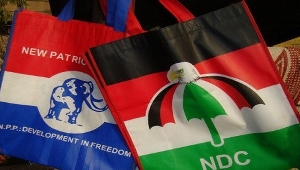Opinions of Wednesday, 23 January 2019
Columnist: Perfectual Labik
Sexual harassment - A perspective
 The writer is encouraging stakeholders to have open discussions on the topic to deepen understanding
The writer is encouraging stakeholders to have open discussions on the topic to deepen understanding
Long before there was a term for it, women had faced some form of sexual harassment. Be it at the workplace, home, school, streets and among friends.
Female sexual harassment is an issue of growing concern and discomfort in Ghana and the world over. It is interesting to note however that, although this worrisome phenomenon has recently received varied attention and stirred up a lot of conversations, especially in the media space, issues of female sexual harassment predates back into history.
Women movements from previous and recent eras have done amazingly well to get governments, organizations, societies, and individuals to give this issue the needed attention. The contributions and relentless efforts of feminist groups have tremendously brought some light and pathway to this as well.
The first published documentation of sexual harassment in the United States of America was in 1908(Fitzgerald, Shullman, Bailey, Richards, Swecker, Gold, Ormerod and Weitzman, 1988). Sexual harassment is considered as a form of sexual violence, a lot of research works have been done extensively on sexual harassment in the context of workplace environment (Boland,2005; Ganu and Agyekum Boateng, 2013). It has paved the way for legislation and labor laws to be passed to protect the rights of women and ensure their safety.
Female sexual harassment is a form of gender-based violence that violates the rights of women and puts them at risk. In some jurisdictions, it is a criminal offense. This brings to light the social construct aspect of female sexual harassment. It is an undeniable fact, the intricacies of gender undertones in sexual harassment. An example is role assignments (culturally and socially) informs and manners that seek to consciously and unconsciously, deepen, facilitate and perpetually encourage male dominance and entitlement over female bodies.
The power play of female sexual harassment and the male dominance of possessing more privileges-sexually-have long gone a way to encourage female sexual harassment.
It has taken strong feminine voices and struggles for some societies to somewhat recognize and accept female sexual harassment as a serious problem. The surge of the “Me Too” movement in Hollywood has done a great deal of good to get people to realize the severity of the issues. It is however sad that it had to take the world this long and Hollywood celebrities to get the world to listen. It is heartbreaking the long silences women have had to endure and suffer in pain. The fear, mental, and emotional torture. The many women who may never ever tell their stories and the many others that have been silenced to their graves.
Localizing the issues, it is sad to note that Ghana as a country with a female population percentage of 50.5 (national population census,2010), is yet to take female sexual harassment as seriously as it should. This is highly due to socio-cultural complexities. Deeply rooted in the social fabric of Ghana is patriarchy. Women have experienced sexual harassment in churches, schools, the marketplace, restaurants, on dates, in their homes, by their friends and family, in public transport, in the streets, on the internet, in the hospital, etc. practically, everywhere, a woman can be sexually harassed.
One of the challenges that have been defining the circumstances and behavior which constitute sexual harassments is the fact that, such conducts are excused in the name of culture. It is very important for Ghanaian women to know what sexual harassment is, which helps in appropriately being able to report. The sense of insecurity is appalling. It is sad that Ghanaian women have to live in so much self-awareness because of the inability of a section of men to behave properly and also the inability or lack of proper working structures to check this.
The other matter is, the perpetrators of sexual harassment hardly recognize their actions are sexually harassing. Some mistake it for being nice or friendly, regardless of literacy levels. Many people never get to report sexual harassment because of cultural positioning on the matter. That is, if she is able to recognize that she has been harassed and the harasser can be identified. However, these behaviors can be checked by educating men about behaviors that are sexually harassing and having systems that effectively and efficiently check these.
As a writer and feminist activist, Beatrix Campbell puts it, “there’s a knowledge of and tolerance of sexual harassment that makes women’s journey in public spaces always a little bit hazardous. I think the people who talk about these stuff as if it’s nothing forget how heartbreakingly sorrowful we feel about it and how ashamed. The other structural conversation to have about this, apart from power, is shame. I am overwhelmed hearing these women’s stories. Recognizing them, their sense of shame, knowing that their entry into the public world is marked forever by that.’’
It is therefore important that conversations on sexual harassment are had in our media space, schools, workplaces, churches, practically everywhere that women and men coexist. These conversations will enable both men and women to better understand what sexual harassment is, the intricacies, complexities and nuances on the issues. Also, these conversations can influence policy-making and strategizing. Importantly, serving as a means for behavior change by offering information and education. Ultimately, we will do better, when we know better.
~ Excerpt of a dissertation by Perfectual Labik
Development Communication (GIJ). If interested in the full dissertation, kindly contact Perfectual via email at Linnanlabik@gmail.com












